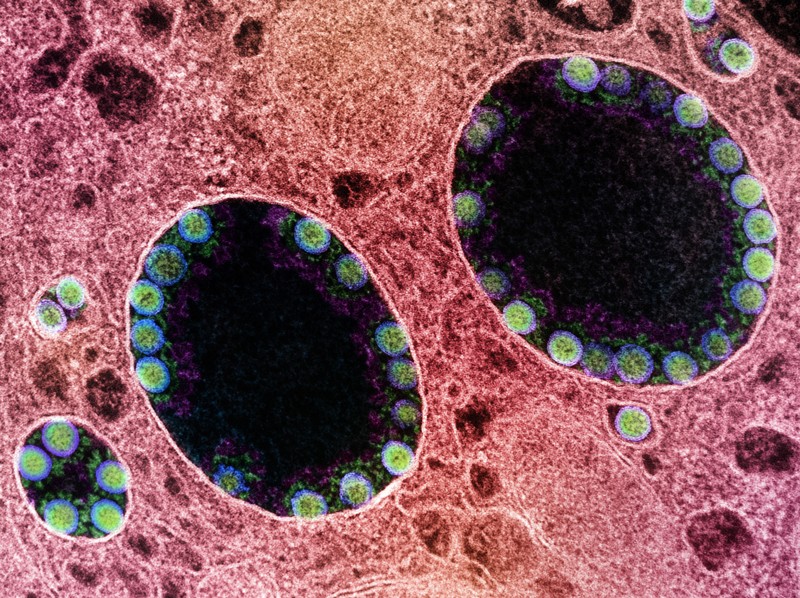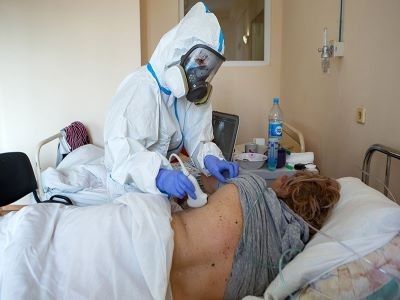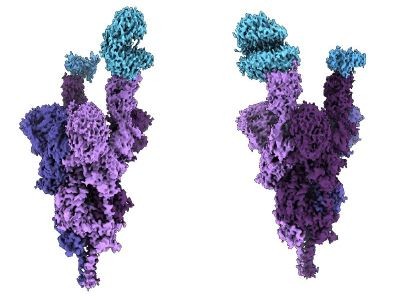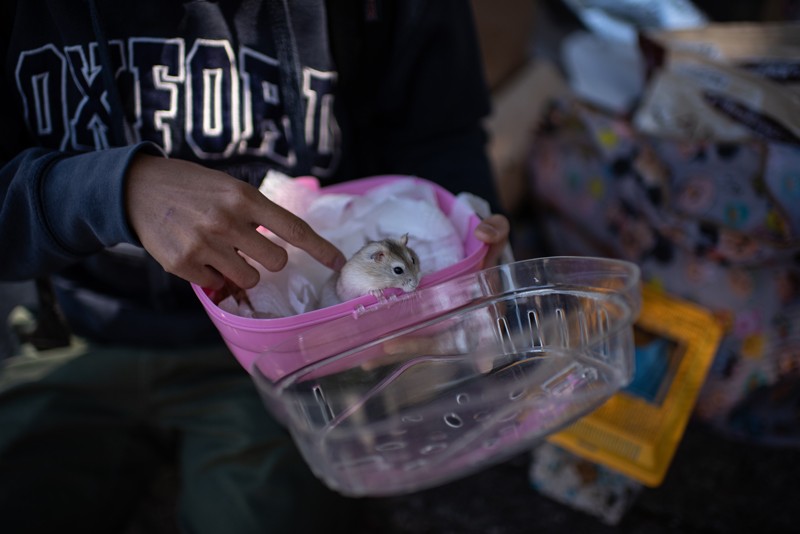Infection rates with the Omicron variant of the coronavirus SARS-CoV-2 are plummeting in many countries around the world. But scientists are still struggling to understand how it spread so rapidly and what it might do next, especially because the subvariant known as BA.2 is rising in some places.
Unlike previous variants of concern, Omicron often infects people who possess antibodies against earlier SARS-CoV-2 versions, acquired through infection or vaccination. In the three months that scientists have been aware of Omicron, they’ve learnt a lot, but most work so far has focused on the parent Omicron strain or on BA.1. Researchers still have a number of pressing questions.
In people, Omicron seems to be highly contagious — BA.2 even more so than BA.1 — but to cause less severe disease than other variants. How does it manage that? Studies on this and on how the variant interacts with host cells and immune systems could lead to better medicines or improved vaccines. And laboratory experiments that put artificial pressures on the virus, to see what mutations arise, offer hints about what variants might appear as SARS-CoV-2 continues to evolve.
“The virus has changed,” says Salim Abdool Karim, an epidemiologist at the Centre for the AIDS Programme of Research in South Africa in Durban. “It enters cells differently, it infects lungs differently, it infects the nose differently.”
Here, Nature highlights some of the key questions for scientists to tackle about Omicron and what might come next.
How is it so transmissible?
Much of Omicron’s success must come down to the dozens of mutations that separate it from previous variants and enable it to evade host antibodies, particularly the neutralizing ones that bind to the virus’s outer spike protein and block cell entry. That means that despite widespread immunity to earlier SARS-CoV-2 versions, there are more available hosts for Omicron to hop between, compared with when the Delta variant was dominant.
But there might also be something inherent in Omicron’s biology that makes it highly transmissible regardless of human immunity. This could be a change to how a person infected with the coronavirus transmits it, how another receives it, or both.
On the transmission side, one idea is that this variant creates a higher concentration of viral particles in the nose, so that infected individuals release more coronavirus with every exhalation. Data on this point have been mixed.
One result in favour of this hypothesis comes from a study1 of human lung and bronchial tissues led by Michael Chan, a virologist at the University of Hong Kong. The data suggest that Omicron replicates faster in the upper respiratory system than all previous forms of the virus.
Researchers led by Wendy Barclay, a virologist at Imperial College London, observed that Omicron replicates faster than Delta in cultures of nose cells2.
But some studies reported that immunologically naive hamsters had fewer virus particles — none of which were infectious —in their lungs compared with previous variants3. Other studies4,5 in people indicate that Omicron produces the same or lower levels of infectious viral particles as Delta does in the upper respiratory tract.
As for the potential receivers of those infectious particles, Barclay suggests that Omicron’s transmission strength might be linked to how it enters cells. Earlier versions of SARS-CoV-2 relied on a cellular receptor, ACE2, to bind to the cells, and on a cellular enzyme called TMPRSS2 to cleave its spike protein, granting the virus entry. Omicron has mostly abandoned the TMPRSS2 route. Instead, cells swallow it whole, and it lands in intracellular bubbles called endosomes2,6.
Many cells in the nose make ACE2 but not TMPRSS2, Barclay says. That could give Omicron an edge as soon as it’s inhaled, allowing it to set up shop without reaching the lungs and other organs where TMPRSS2 is more widely expressed. This could, in part, explain why Omicron can pass so easily between people and how it so rapidly establishes infection.
Is it less severe? If so, why?
Hospitalization and death rates for Omicron, compared with those for previous variants, seem to suggest that it is a weaker strain. But because many people have some level of immunity, through COVID-19 vaccination or previous infection, it’s challenging to untangle how much of that reduced severity stems from people’s immune systems being preconditioned to take on the virus, and how much from some inherent feature of the virus itself.
“It’s much more difficult to have a ‘clean’ genetic and immunological study,” says Jean-Laurent Casanova, a paediatric immunologist at the Rockefeller University in New York City.
Scientists at Case Western Reserve University School of Medicine in Cleveland, Ohio, attempted to control for these factors by looking at first-time COVID-19 cases in children younger than 5 years old, who are not yet eligible for vaccination7. Omicron infections were less severe than Delta cases in terms of rates of emergency-department visits, admissions to hospital or intensive-care units, and need for mechanical ventilation.
In another study8, researchers in South Africa analysed hospitalization and death risk for infected adults during the Omicron wave and during earlier surges. Adjusting their data to account for previous infections, vaccination and other factors, they estimated that 25% of Omicron’s reduced risk of severe disease or death was due to something intrinsic to the virus itself.
What blunted Omicron’s fangs? Chan’s team found that, although the variant is successful in the upper respiratory system, it was less able to replicate in lung tissue1. And studies in rodents found less inflammation and damage to the lungs3.
In people, Omicron’s relative inability to colonize or damage the lungs seems to result in fewer cases of dangerous pneumonia and respiratory distress, but in higher numbers of annoying head colds.
Another feature that might underlie Omicron’s reduced severity, says Barclay, is its inability to fuse individual lung cells together into larger blobs called syncytia. Previous coronavirus variants did this, and because these aggregates were present in the lungs of people who died of severe illness, some scientists propose that this aggregation contributes to symptoms or helps the virus to spread. But the fusion relies on TMPRSS2, and Omicron infections don’t seem to result in the same levels of syncytium formation2.
What is the complete immune response to Omicron?
One of the body’s key defences against pathogens is a molecule called interferon, which cells produce when they detect an invader. Interferon tells infected cells to ramp up their own defences — for example, by keeping viruses trapped in endosomes. Interferon also delivers a warning signal to uninfected neighbouring cells so that they can do the same.
Previous variants were able to avoid or disable many of interferon’s effects. Some research suggests that Omicron has lost some of that advantage9, although other experiments find that it’s better equipped to withstand interferon’s effects10.
Researchers are also mapping the parts of the virus that get the attention of T cells. The viral proteins recognized by T cells seem not to have changed much in Omicron11, compared with in previous SARS-CoV-2 variants.
That’s good news, because although T cells are slower than antibodies to respond to a recurring threat, they’re effective once they get going. This helps to stop breakthrough infections from becoming severe.
Understanding the parts of SARS-CoV-2 that rarely mutate and serve as strong T-cell activators could help vaccine designers to create new formulations to induce this long-lasting form of immunity against current and future variants.
What comes next?
The overall Omicron data so far suggest to Barclay that Omicron could be highly contagious early on in the infection because it starts out strong. But it’s possible that the viral load, along with the variant’s ability to infect other cells or other people, quickly drops as it attempts to spread beyond the upper airways or as it encounters interferon.
“Omicron is very good at getting into the cells of the nose,” she says. “Once it’s in there, actually, I don’t think that Omicron is a terribly fit virus.”
The diminished severity has provided a thin silver lining to the Omicron surge, but most experts think that this won’t be the final variant of concern. There are two likely scenarios going forward, says Jesse Bloom, an evolutionary virologist at the Fred Hutchinson Cancer Research Center in Seattle, Washington. One is that Omicron continues to evolve, creating some sort of Omicron-plus variant that is worse than BA. 1 or BA.2. The other possibility is that a new, unrelated variant appears.
The latter is what’s happened with each variant of concern so far. “It suggests that there’s a huge amount of plasticity in the virus,” says Lucy Thorne, a virologist at University College London. “It’s got different evolutionary options.”
With dozens of mutations, Omicron explored more of the evolutionary space than the other variants. Many of Omicron’s mutations ought to make it less fit, but it thrives, probably because other mutations mitigate those disadvantages.
What evolutionary options might it still have left to try? One way to make educated guesses is to let the virus evolve under controlled laboratory conditions. For example, researchers at the University of Alabama at Birmingham found, after growing the virus in several rounds of cell culture, that the original SARS-CoV-2 strain picked up the ability to bind to heparan sulfate, a molecule on the surface of all cells12. This cultured virus still used ACE2, but the extra binding partner made it better at infecting cells.
As the study authors note, changes in cell-culture dishes don’t necessarily mean that the virus would be any better at infecting animals or people; it’s possible the mutations might make it inept in other ways. Thus, this type of work does not fall under the strictest definition of ‘gain-of-function research of concern’.
Researchers can also put pressure on the virus in the lab, allowing it to evolve in the presence of antibodies or antiviral drugs. For example, scientists passed an early SARS-CoV-2 strain from dish to dish in the presence of the antiviral remdesivir, and the virus readily developed a mutation that made it less sensitive to the drug13.
These kinds of experiment enable researchers to predict how the virus might evolve. Finding such mutations in the lab doesn’t mean they will occur in nature, but scientists tracking coronavirus genetics through surveillance can keep an eye out for them.
SARS-CoV-2 is known to infect several animal species, including mink, deer and hamsters. Some scientists think that Omicron could have passed through an animal host or hosts before it was first detected in South Africa last November. Other researchers are wondering whether it might infiltrate even more species than it is known to and then move back to humans again, potentially bringing new and dangerous adaptations.
“We have to address the elephant in the room, quite literally: where else has the virus gone, and what is it doing in those species?” says Jason Kindrachuk, a virologist at the University of Manitoba in Winnipeg, Canada, who is part of a team tackling this question. The group is checking wildlife samples for Omicron and is also testing how the virus’s spike interacts with ACE2 proteins from different species.
As for severity, there’s no guarantee that it will continue to diminish. Chan is keeping an eye on pathogenicity using the virus’s temperature preference as a clue. Viruses that stick to the upper airways replicate well at a cool 33 °C and tend to cause a milder infection. Those that prefer the 37 °C of the lungs are likely to be more virulent. The original Omicron variant doesn’t seem to grow better at either temperature, says Chan, but he’s checking its descendants now.
Whatever happens next, these and other questions will keep scientists busy with Omicron for months to come. Most current research is still preliminary, awaiting peer review and confirmation in other labs.
After all, researchers were still trying to understand Delta when Omicron emerged, notes Kindrachuk. “We’ve only really known this variant since the end of November,” he says. “We don’t know a lot yet.”
"lasting" - Google News
February 24, 2022 at 10:59PM
https://ift.tt/9BOuyXZ
Omicron's lasting mysteries: four questions scientists are racing to answer - Nature.com
"lasting" - Google News
https://ift.tt/cHObtwB
Shoes Man Tutorial
Pos News Update
Meme Update
Korean Entertainment News
Japan News Update
Bagikan Berita Ini




















0 Response to "Omicron's lasting mysteries: four questions scientists are racing to answer - Nature.com"
Post a Comment